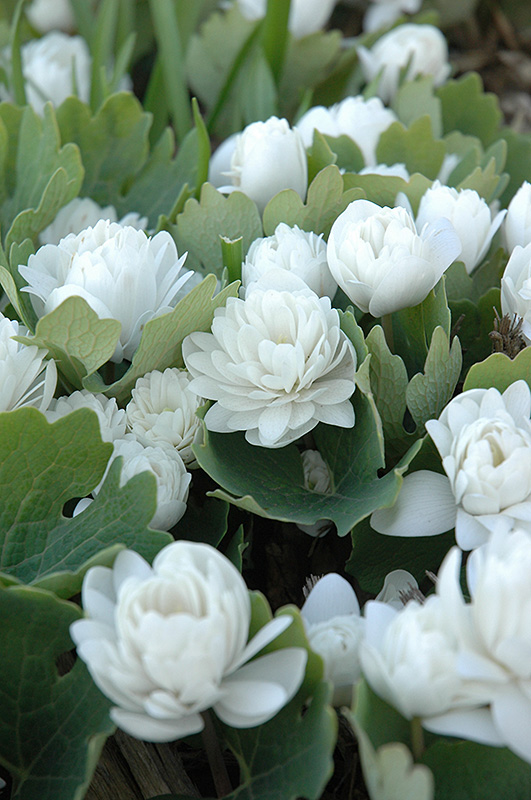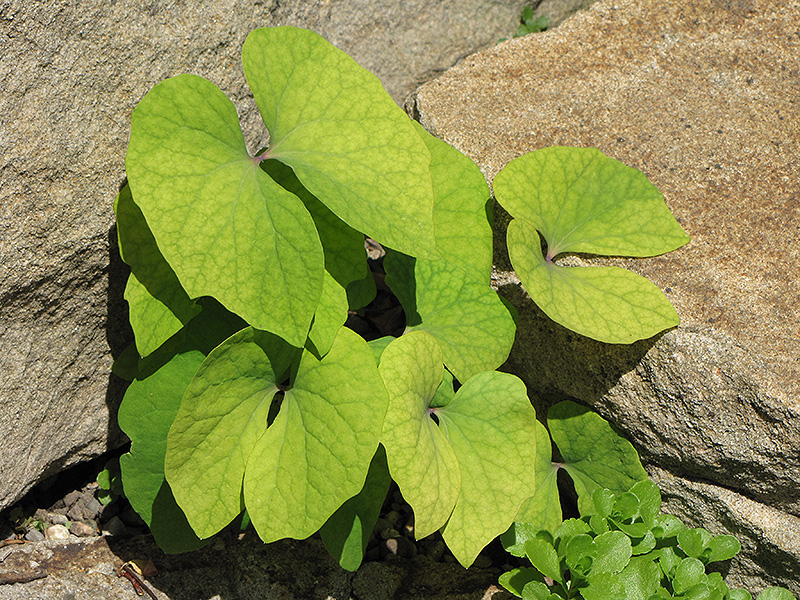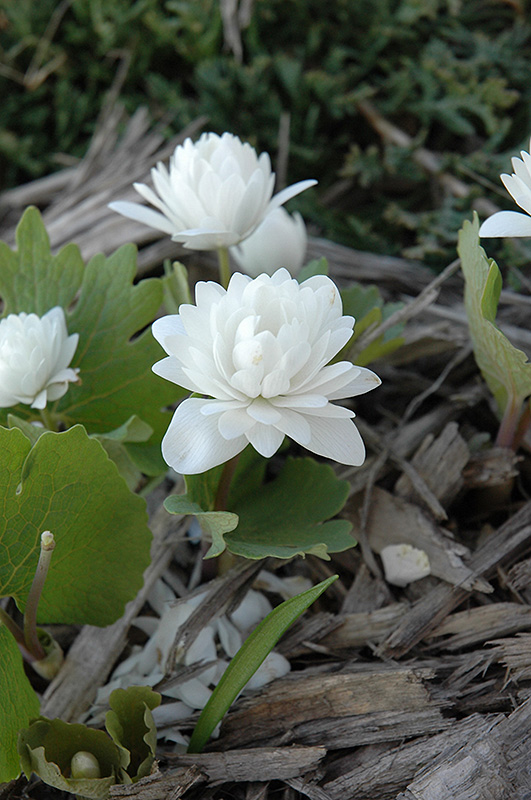Plant Finder
Double Flowered Bloodroot*
Sanguinaria canadensis 'Flore Pleno'
* This is a "special order" plant - contact store for details
Plant Height: 6 inches
Flower Height: 8 inches
Spacing: 6 inches
Sunlight:
![]()
![]()
Hardiness Zone: 3a
Description:
A lovely small woodland plant, this cultivar features bright white fully double flowers that are small but quite showy; slow to increase but will eventually form an elegant mat, accenting a woodland garden
Ornamental Features
Double Flowered Bloodroot features bold double white buttercup flowers with yellow anthers at the ends of the stems from early to mid spring. Its lobed palmate leaves remain grayish green in color throughout the season.
Landscape Attributes
Double Flowered Bloodroot is an open herbaceous perennial with a ground-hugging habit of growth. Its relatively coarse texture can be used to stand it apart from other garden plants with finer foliage.
This plant will require occasional maintenance and upkeep, and should not require much pruning, except when necessary, such as to remove dieback. Deer don't particularly care for this plant and will usually leave it alone in favor of tastier treats. Gardeners should be aware of the following characteristic(s) that may warrant special consideration;
- Spreading
Double Flowered Bloodroot is recommended for the following landscape applications;
- Mass Planting
- Rock/Alpine Gardens
- Border Edging
- General Garden Use
- Groundcover
- Naturalizing And Woodland Gardens
Planting & Growing
Double Flowered Bloodroot will grow to be only 6 inches tall at maturity extending to 8 inches tall with the flowers, with a spread of 6 inches. When grown in masses or used as a bedding plant, individual plants should be spaced approximately 6 inches apart. Its foliage tends to remain low and dense right to the ground. It grows at a medium rate, and under ideal conditions can be expected to live for approximately 10 years. As an herbaceous perennial, this plant will usually die back to the crown each winter, and will regrow from the base each spring. Be careful not to disturb the crown in late winter when it may not be readily seen! As this plant tends to go dormant in summer, it is best interplanted with late-season bloomers to hide the dying foliage.
This plant does best in full sun to partial shade. It prefers to grow in average to moist conditions, and shouldn't be allowed to dry out. It is not particular as to soil pH, but grows best in rich soils. It is somewhat tolerant of urban pollution. This is a selection of a native North American species, and parts of it are known to be toxic to humans and animals, so care should be exercised in planting it around children and pets. It can be propagated by division; however, as a cultivated variety, be aware that it may be subject to certain restrictions or prohibitions on propagation.
* This is a "special order" plant - contact store for details


